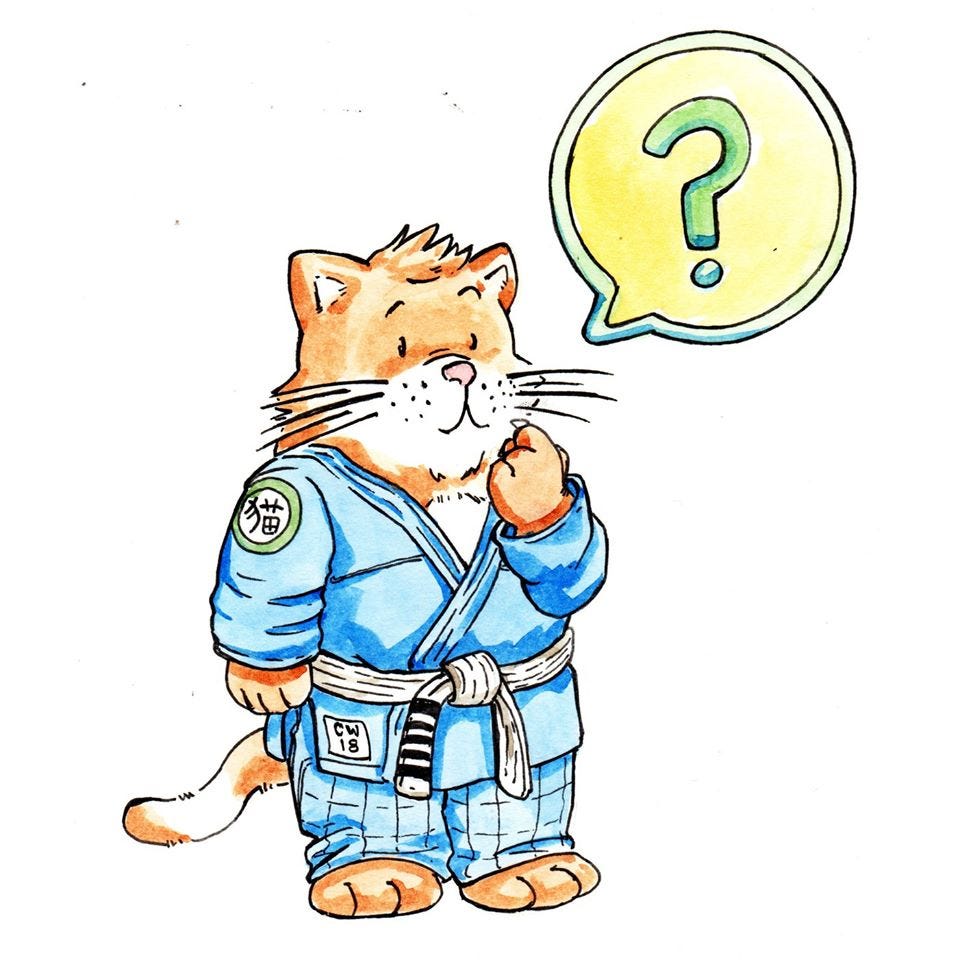The most important concept in jiu jitsu
And probably in life, too
Think back to a time when everything felt just right. Things were effortless, your desired outcomes achieved, and time was no factor.
Now, think back to a time when everything felt hard. Things seemed to be stuck, you couldn’t ever seem to catch a break, and time seemed to drag on.
We’ve all had this experience when rolling in jiu jitsu. When you are in an advantageous position, it’s easy to pull off whatever you want to do. But if you are stuck in mount, side-control, or the dreaded north-south position…well, that’s a different story.
What is the difference between these two scenarios?
And more importantly, how can we ensure that we are as effortless as possible in our jiu jitsu?
The answer lies in the theory of alignment.
Jiu-Jitsu is a game of preserving your posture, structure, and base, while attempting to break your opponent’s. - BJJ Mental Models
The second I started to think of jiu jitsu in this way, my world changed. I used to think of jiu jitsu as a series of separate movements and positions. “I need to get this cross-collar grip. I have to get side control. I need to take mount.”
What I didn’t realize was that by looking at jiu jitsu in specific movements, I was actually making life more difficult for myself. Instead, I needed to look at my practice through a more robust conceptual lens that could apply to all situations.
Enter the alignment theory.
This theory is amazing because it allows you to find the “why” in every move that you do in jiu jitsu. The techniques themselves — where to grip, how to shift your hips — those comprise the “how” in your practice.
But knowing the why of any situation allows you to critically examine whether or not you should deploy that strategy at a certain moment.
For example, by month one, most practitioners know generally how to do a simple armbar from mount in the drilling context. Very few of them can pull it off in sparring.
Why?
Because they don’t know the necessary conditions to break the opponent’s alignment. To pull off an armbar:
You really need to be controlling all of the levers in an opponent’s arm: not just the wrist, but the elbow and shoulder as well.
Ideally you’d control the other levers as well on the opposite side, so that both arms are trapped before you even start your submission.
Then there’s the head, which controls a person’s spine — it’s a good idea to keep that in place.
Understanding why a submission works is more important than memorizing every little detail about how to do it.
The “why” allows you to adapt to situations. Therefore, even if the exact perfect scenario isn’t presented to you, you can utilize those principles to tweak your approach and still reach your end goal.
I think that alignment is really important for happiness in life, too. Because if you know what your why is, you’re able to keep going when presented with challenges. It’s hard for humans to see future gain….so, the reason you have for doing something can help anchor you in a messy or chaotic situation.
We can’t prepare for every single challenge that life throws at us. But we can always choose to orient ourselves in the correct direction that gives us the best chances of succeeding. We do this by aligning ourselves to our path.
